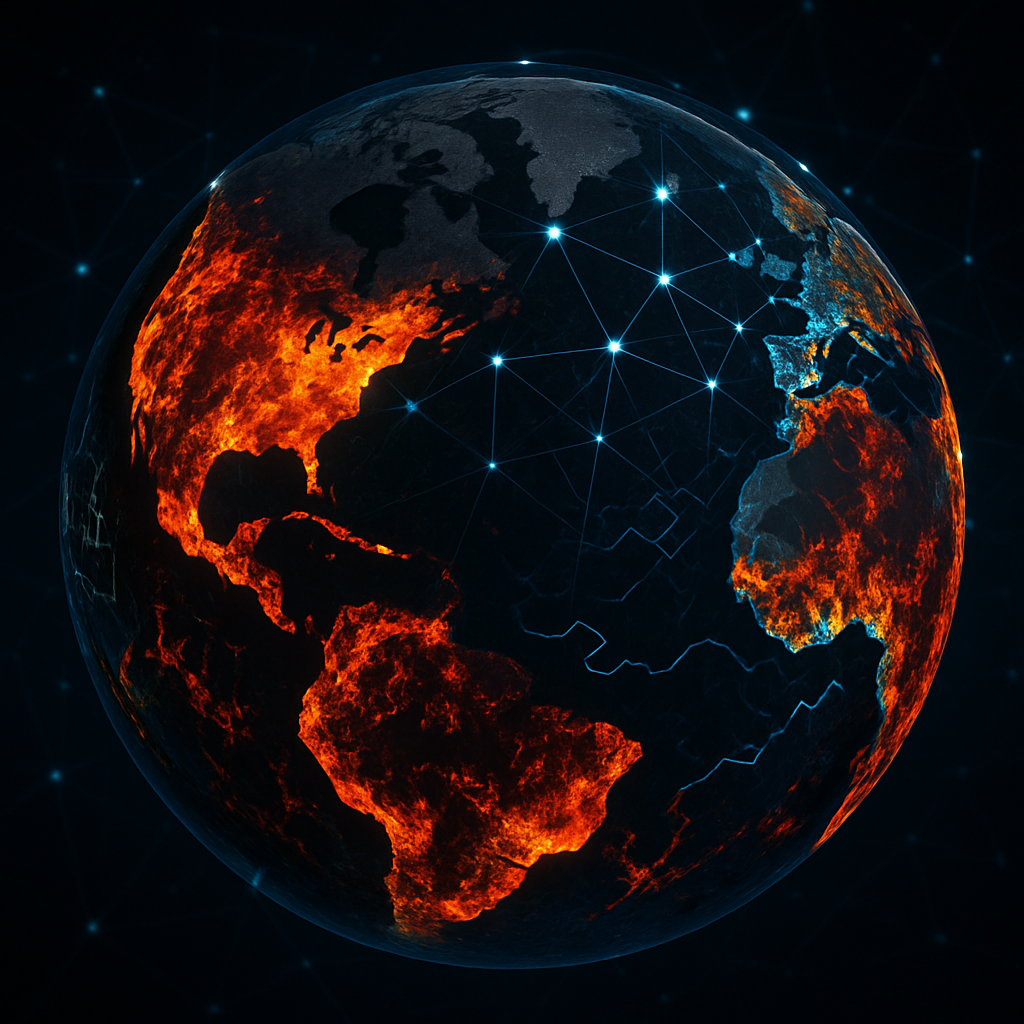
『 ZORO 』
5 months ago
AI Environmental Disaster Prediction Gains Momentum
As climate risks grow more severe and complex, this AI-driven approach marks a turning point. AlphaEarth’s integration of machine learning and remote sensing is poised to transform early warning systems and deliver actionable insights to policymakers and emergency responders.

🧠 What Is AlphaEarth and How Does It Work?
Virtual Satellite Monitoring
AlphaEarth uses advanced AI to process satellite imagery and geospatial data continuously. It interprets patterns—such as soil moisture changes, vegetation stress, and storm formation—to forecast potential disasters before they unfold.
Multi-Hazard Scope
This platform targets environmental threats like floods, heat waves, wildfire risk, and crop failure. By operating at a planetary scale, AlphaEarth serves global communities—from urban centres to rural areas.
Explainable and Localized Alerts
AlphaEarth’s forecasts are enriched with impact modelling, estimating how each event might affect local populations, infrastructure, and agricultural zones. This combines AI predictions with contextual risk modelling.
🔍 Why AI Environmental Disaster Prediction Matters
Crisis Preparedness
Earlier warnings offer vital lead time—enabling evacuations, resource allocation, and infrastructure protection.
Democratizing Access
AI models like AlphaEarth and Microsoft’s Aurora make high-resolution forecasting available to regions lacking supercomputing infrastructure.
Economic and Human Resilience
Deloitte reports that AI-supported infrastructure can cut disaster-related losses by up to 15%, enhancing budget planning, recovery, and resilience.
⚖️ Challenges and Ethical Considerations
Data & Model Integrity
AI accuracy depends on diverse, high-quality datasets and transparent algorithms. Errors or incomplete historic data can lead to false positives or missed threats.
Equity and Inclusion
AI must serve marginalized communities fairly. Systems like AEJIM prioritize crowdsourced validation and ethical design to ensure equitable warning delivery.
Integration in Policy
Forecasts must feed directly into emergency protocols while preserving privacy and accountability. Coordination between technologists, policymakers, and communities remains vital.
🧠 Expert Insights
Markus Reichstein, lead researcher at Max Planck Society:
“We must forecast not just hazards—but also their impacts, in ways that communities can act on quickly.”
A recent Nature Communications review echoes this stance: AI should support explainable, trustworthy early warning systems that integrate climate data with societal vulnerability.
University of Florida’s Dr Zhe Jiang is leading projects that simulate coastal hazards via AI—such as storm surges and flooding—with faster, energy-efficient models to assist first responders.
Conclusion
The emergence of AI environmental disaster prediction—exemplified by DeepMind’s AlphaEarth—represents a paradigm shift in climate risk management. By translating environmental data into early alerts and impact modeling, this technology enhances readiness, resilience, and equity.
As AI tools integrate further into environmental governance, the focus must remain on transparency, human-centered design, and global access. AlphaEarth and its successors could be instrumental in safeguarding communities as climate threats escalate.
Source-



